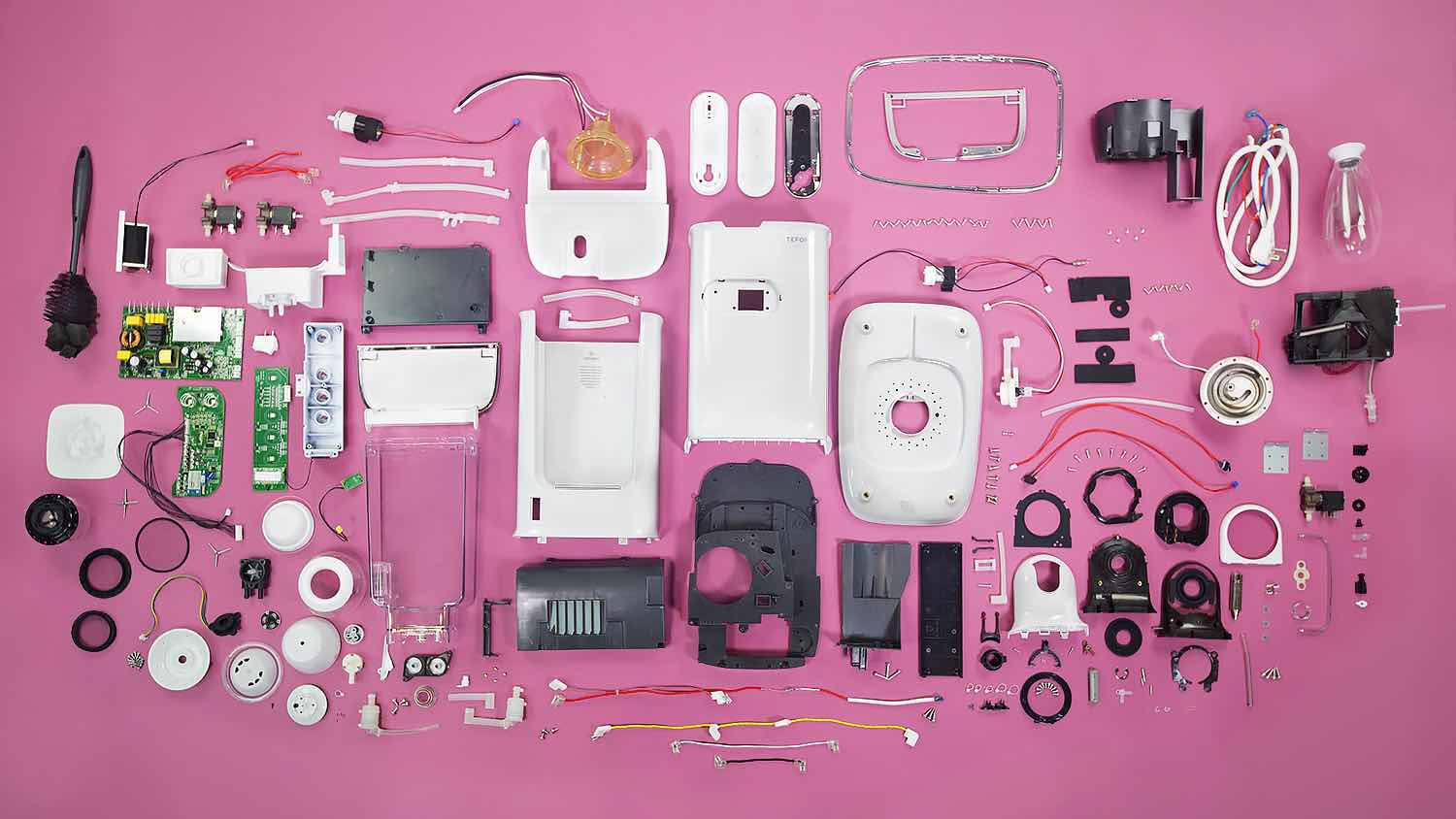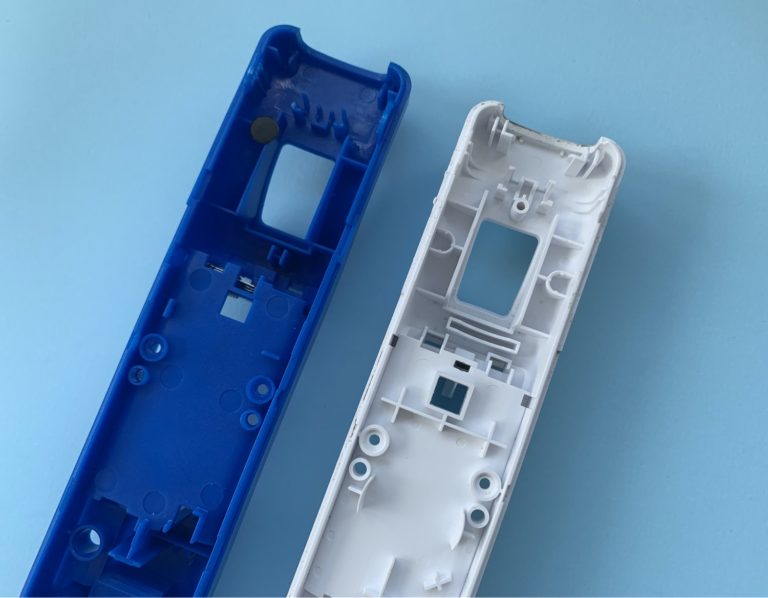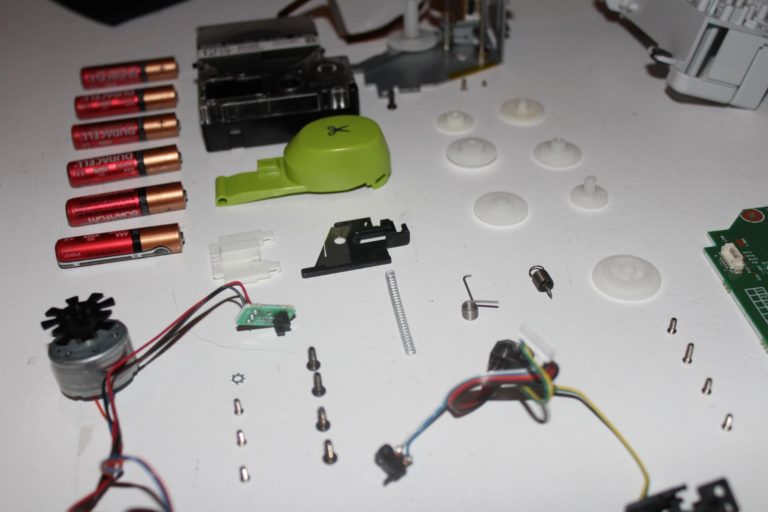As winter gets underway, who among us does not appreciate a piping hot cup of tea in the afternoon? Sure, many of us are coffee drinkers, but we appreciate a civilized cup of tea, too. Our love of hot beverages had us curious about what the Teforia might bring to the table, and particularly, how it might do so. What better way to answer those questions than to take it apart? So we did.
Here are the features of interest we’re drilling into for this teardown:
1. Chrome trim pieces – Learn how to add visual flare to your product, for a non-negligible cost
2. Spring loaded infusion arm mechanism – A beautifully designed mechanism that…fills a container with water
3. Over-engineering – Does a tea infuser really need to be so complex?
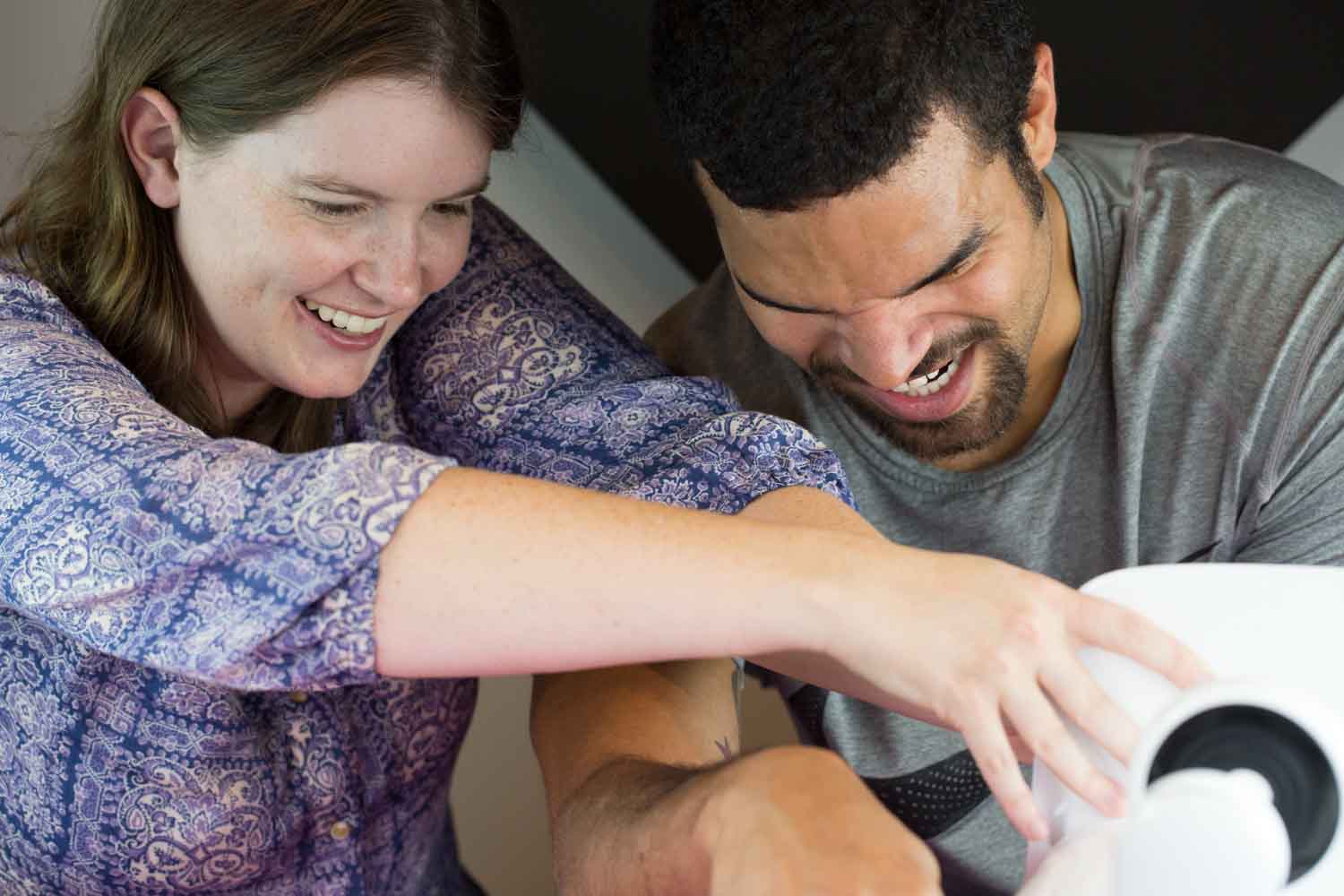
Chrome Trim
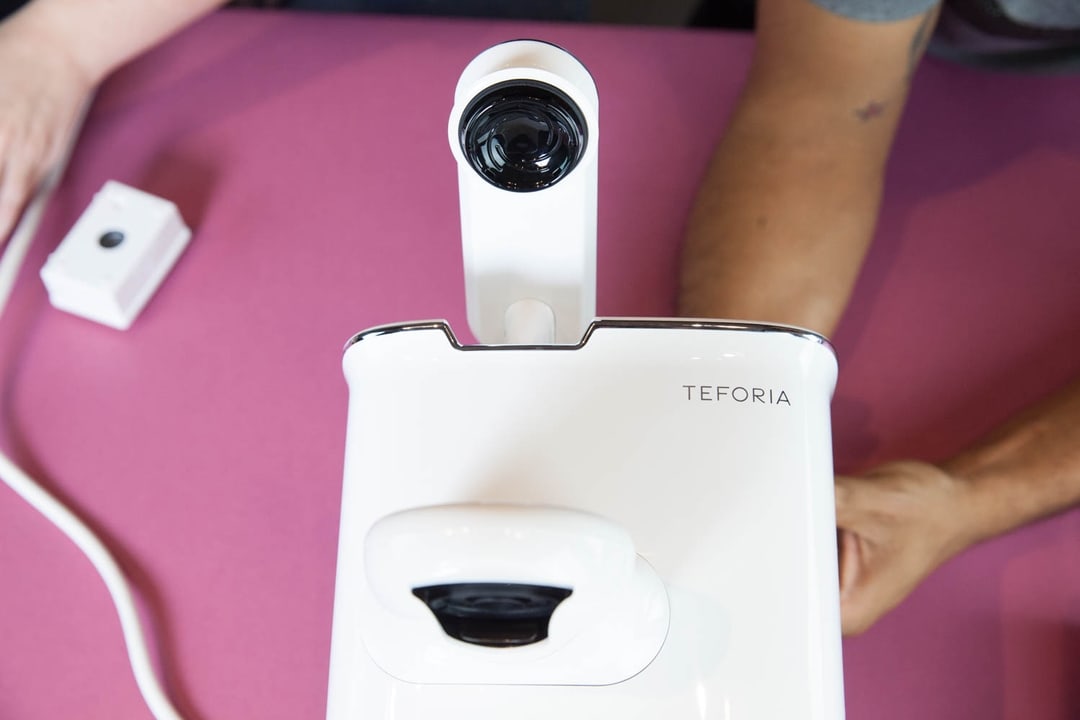
We noticed a high number of injection molded plastic parts that were chrome plated for visual effect. Many of these parts helped create a “chrome trim” look in the final assembly.
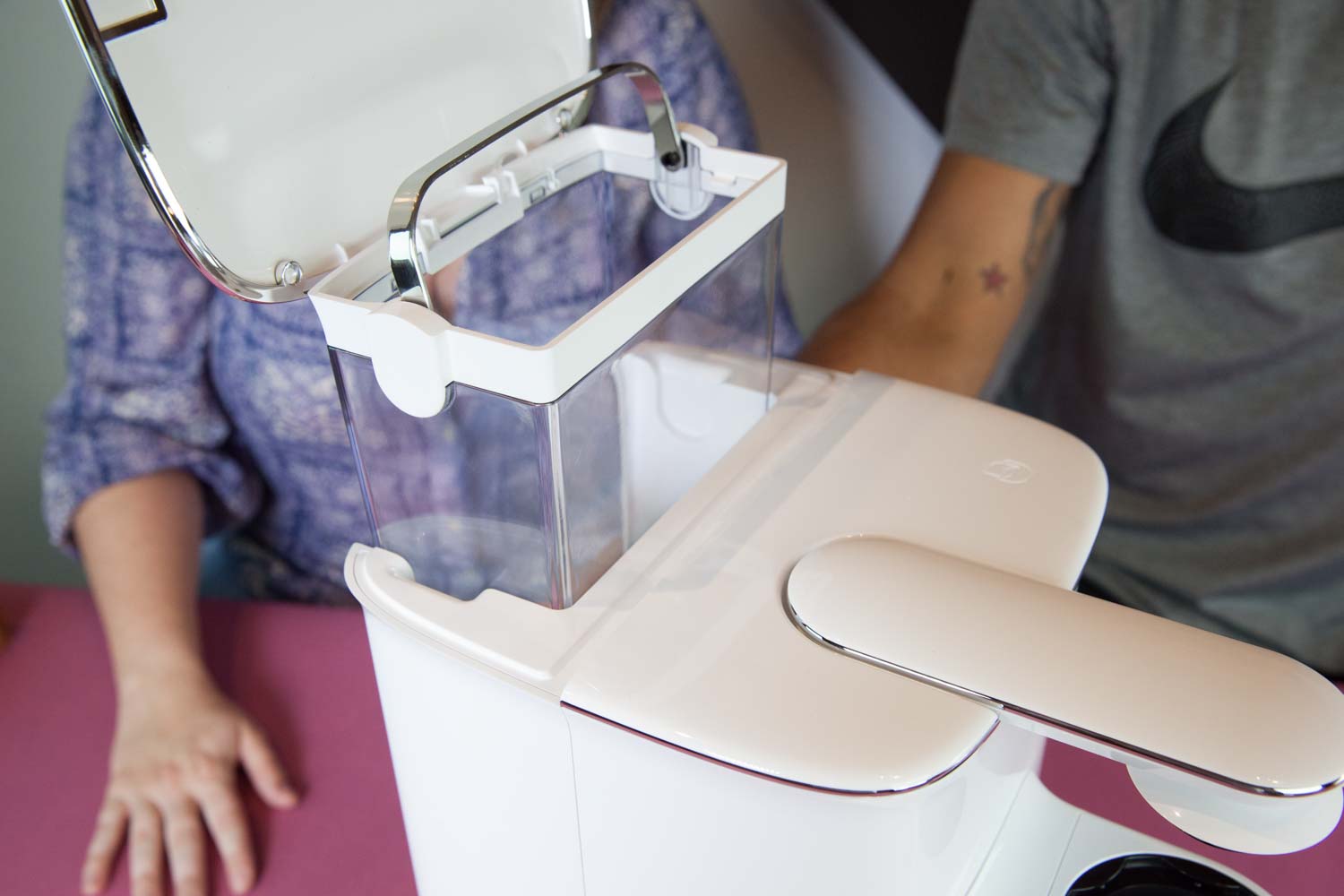
Chrome plating injection molded parts is expensive! The parts have to be specifically designed for plating before they are molded, making sure that they have no blind holes, deep grooves, or sharp edges.
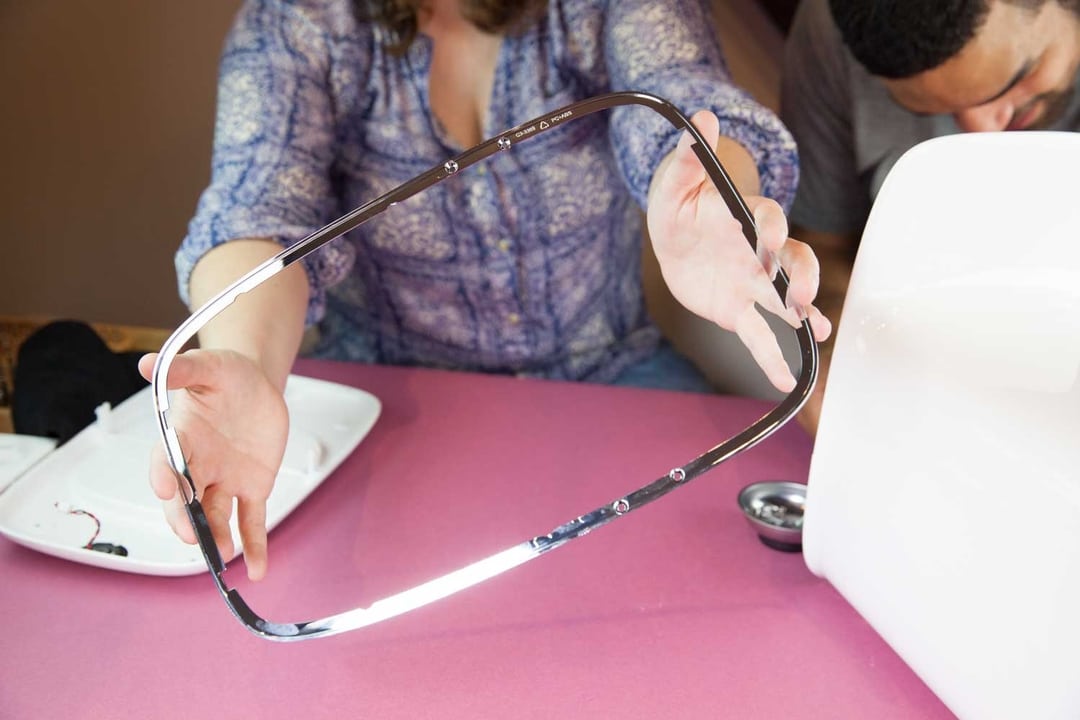
Chrome plating adds time to the manufacturing process. Parts must be molded slow and hot to make sure that pre-plating and post-plating tolerances can be met. Parts then have to be plated, after they have been molded and cooled.
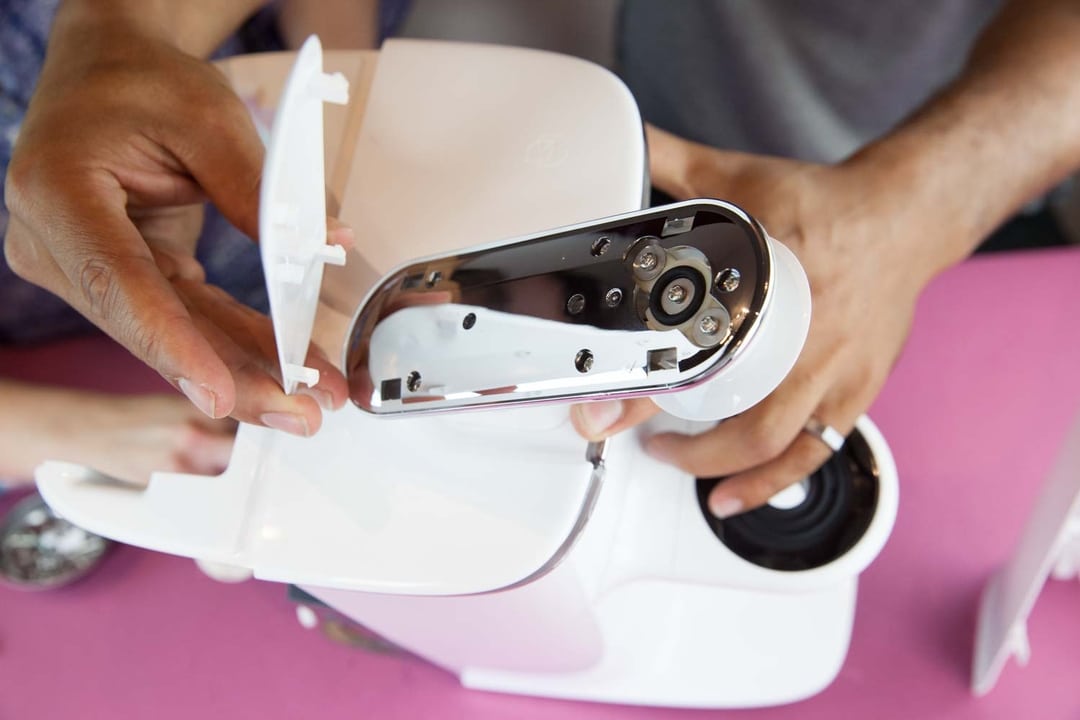
These chrome pieces did add a nice visual touch to the machine, but they also added a lot of unnecessary cost to an already expensive product.
Infusion Arm Open/Close Mechanism
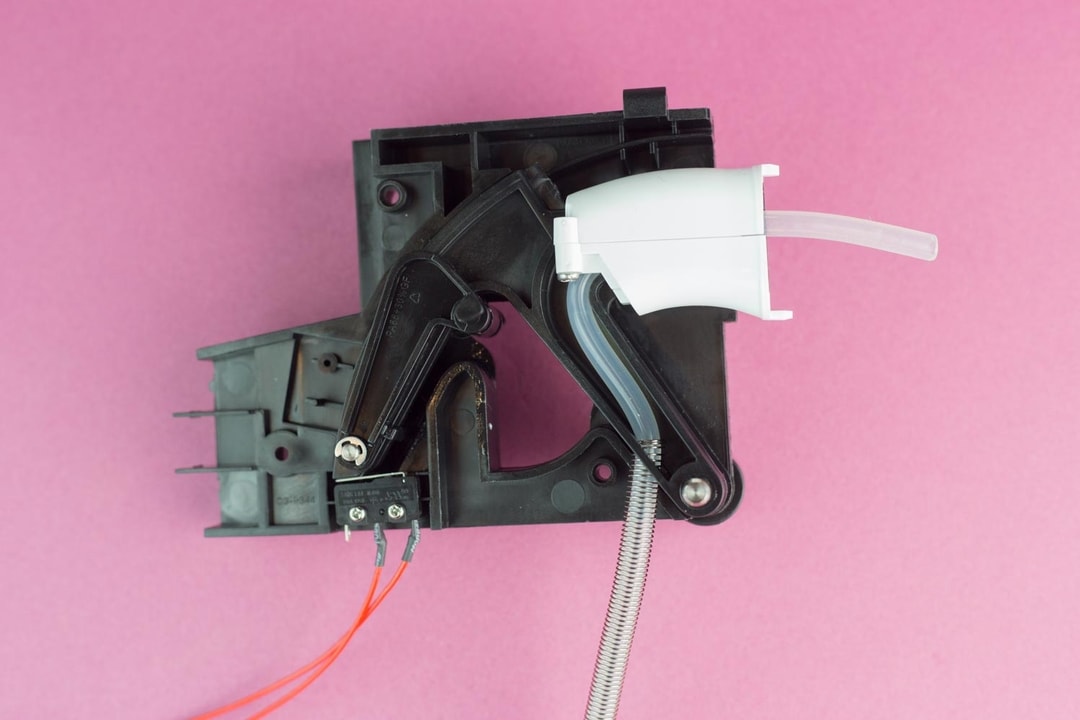
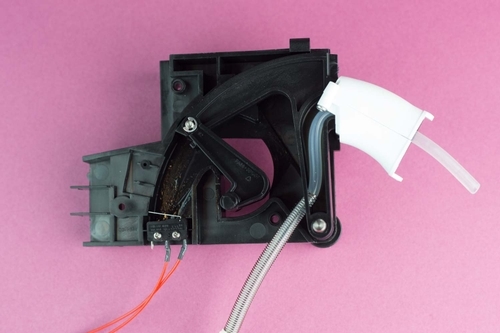
An interesting part of the Teforia is the mechanism that opens and closes the infusion arm.
It’s comprised of numerous injection molded pieces that are acted upon by two extension springs.
The mechanism firmly keeps the arm up while in the open position and creates a firm seal to the infusion pod when in the down position.
There is also a momentary switch within the mechanism that is depressed when the arm is closed. This switch, along with two switches in the nest that are triggered by inserting the infusion globe and carafe, let one or more of the four PCBAs know that it’s safe to start brewing some piping hot tea.
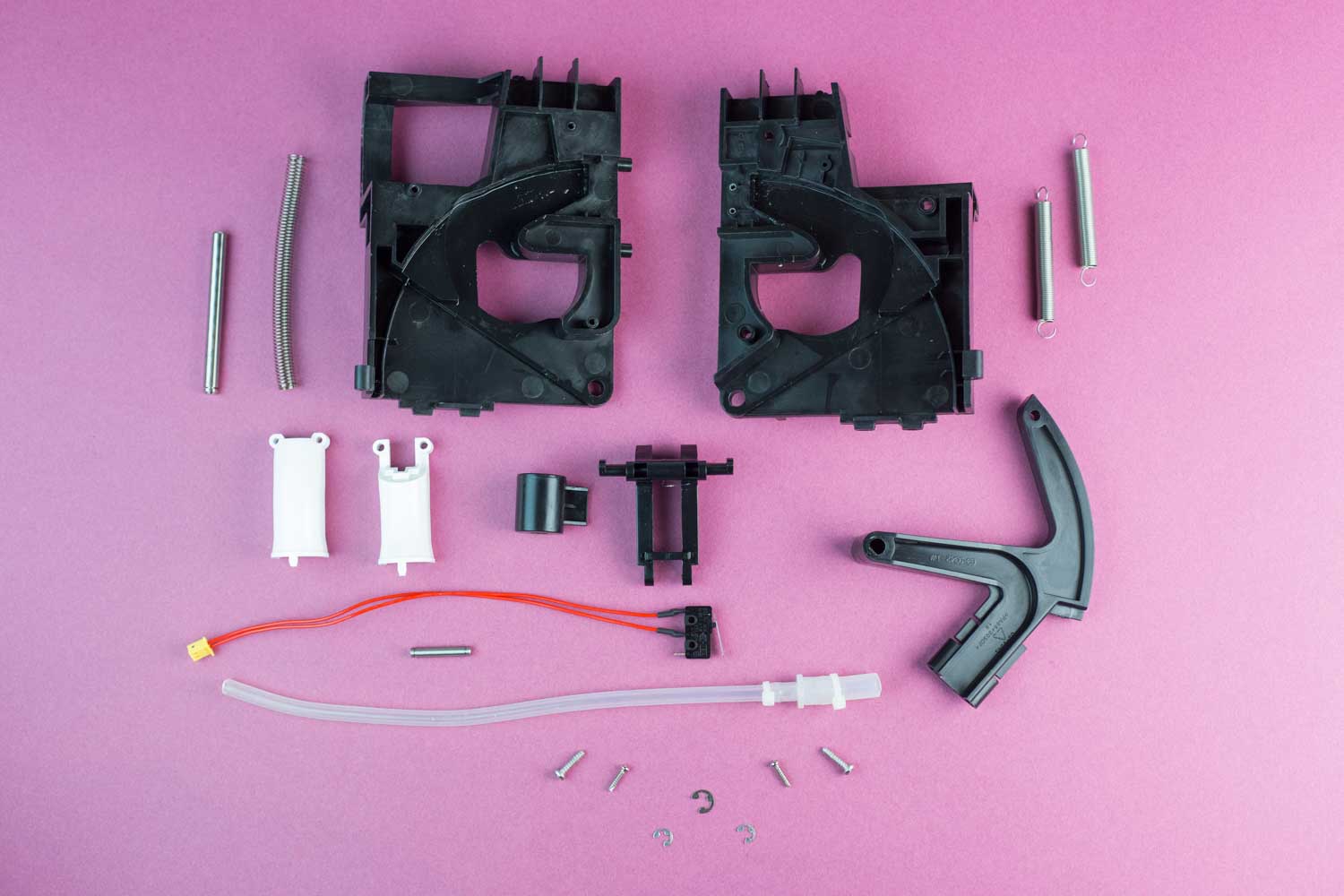
Aside from raising and lowering the infusion arm, the mechanism has provisions for routing the hot water line.
Over-Engineering
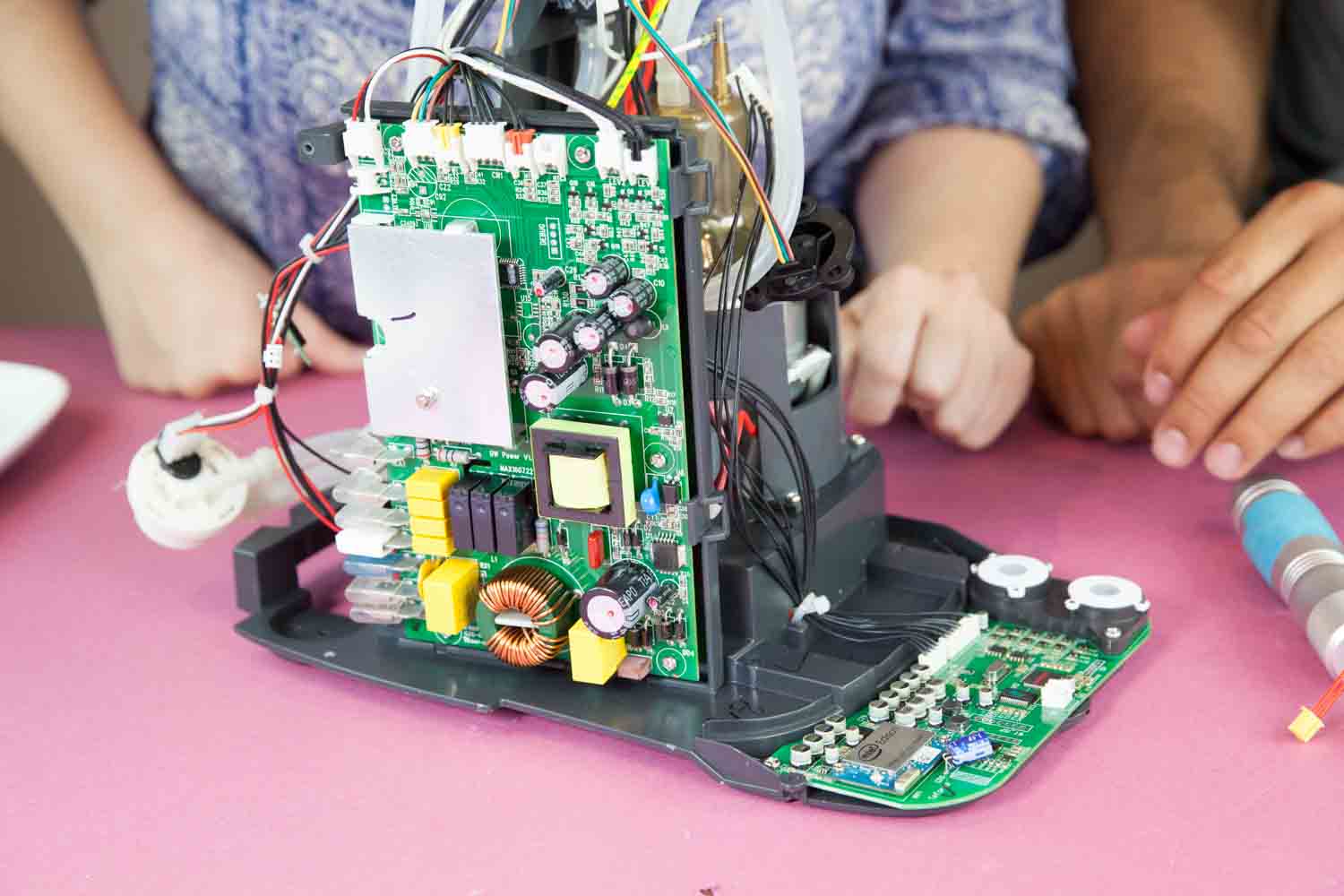
We were quite surprised to open this tea brewer and find four different custom PCBAs, with an Intel Edison chip (Bluetooth/Wifi)
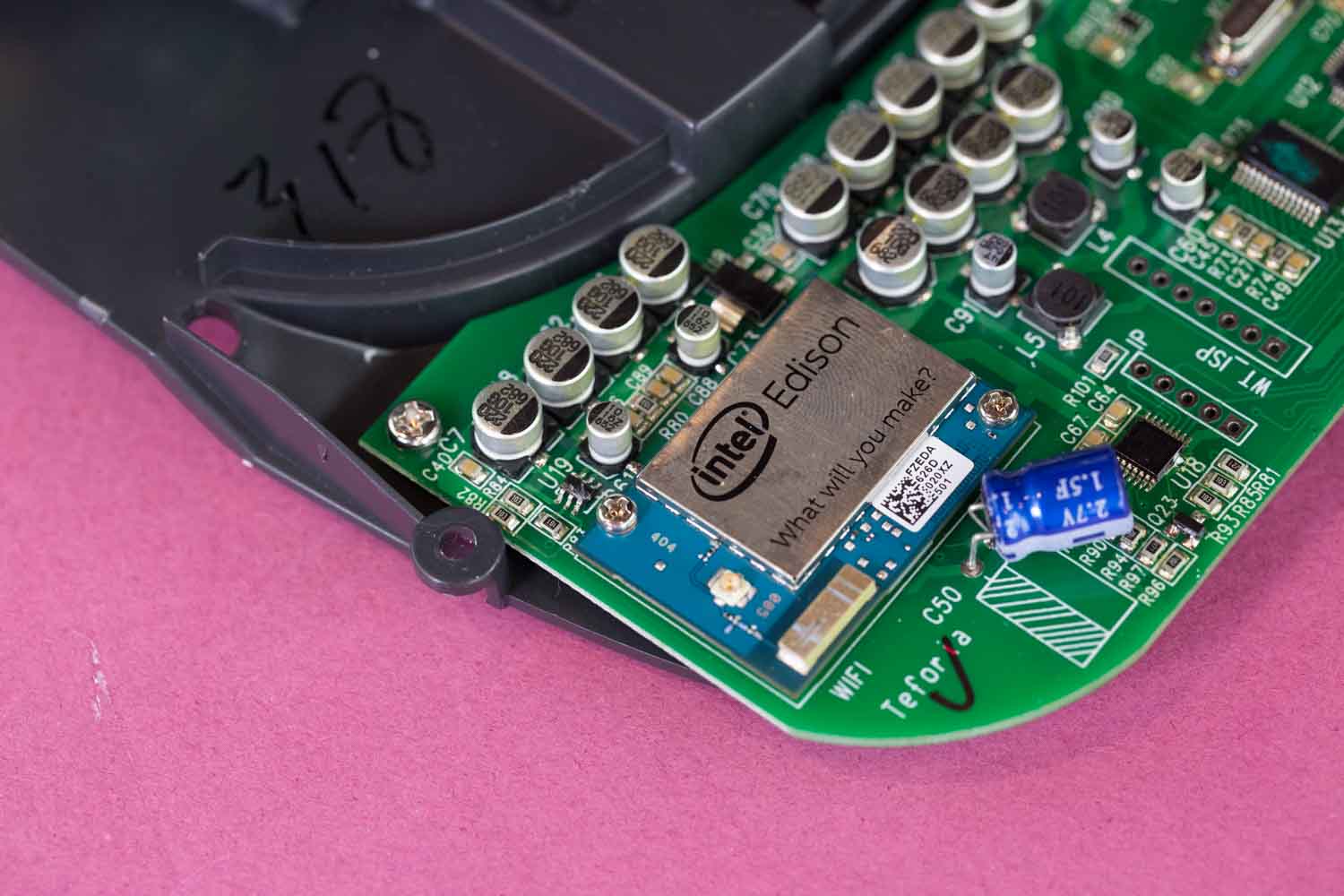
This thing even had an RFID Scanner to detect the different tea pods you can use!

We couldn’t help but feel that this machine that brews tea, something that can be achieved with a metal pot and just about any heat source, is grossly over engineered. Juicero???
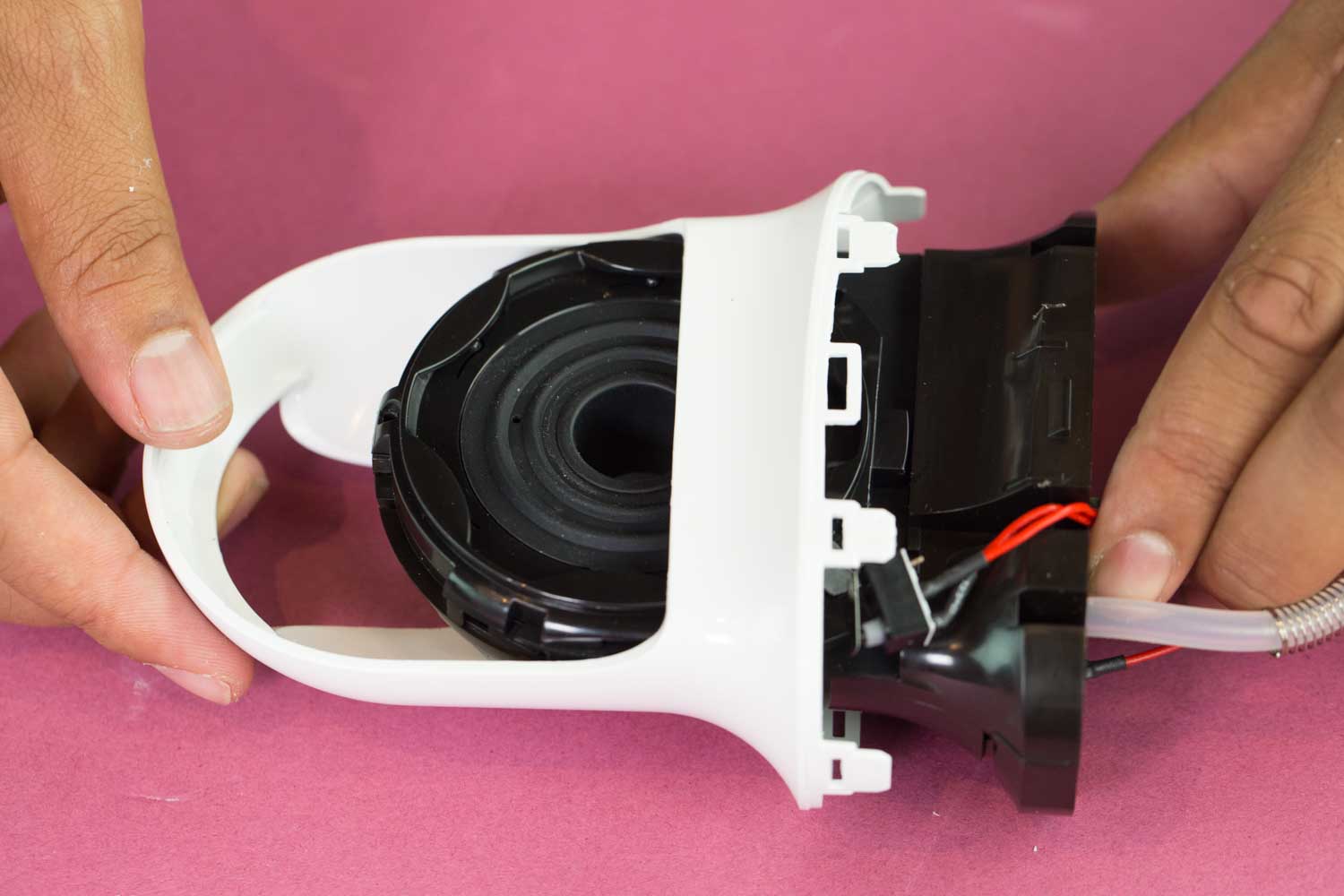
This awe continued as we began disassembling the “nest”. Its use? Hold the the infusion globe and carafe.What we found? Dozens and dozens of parts, including, but not limited to:
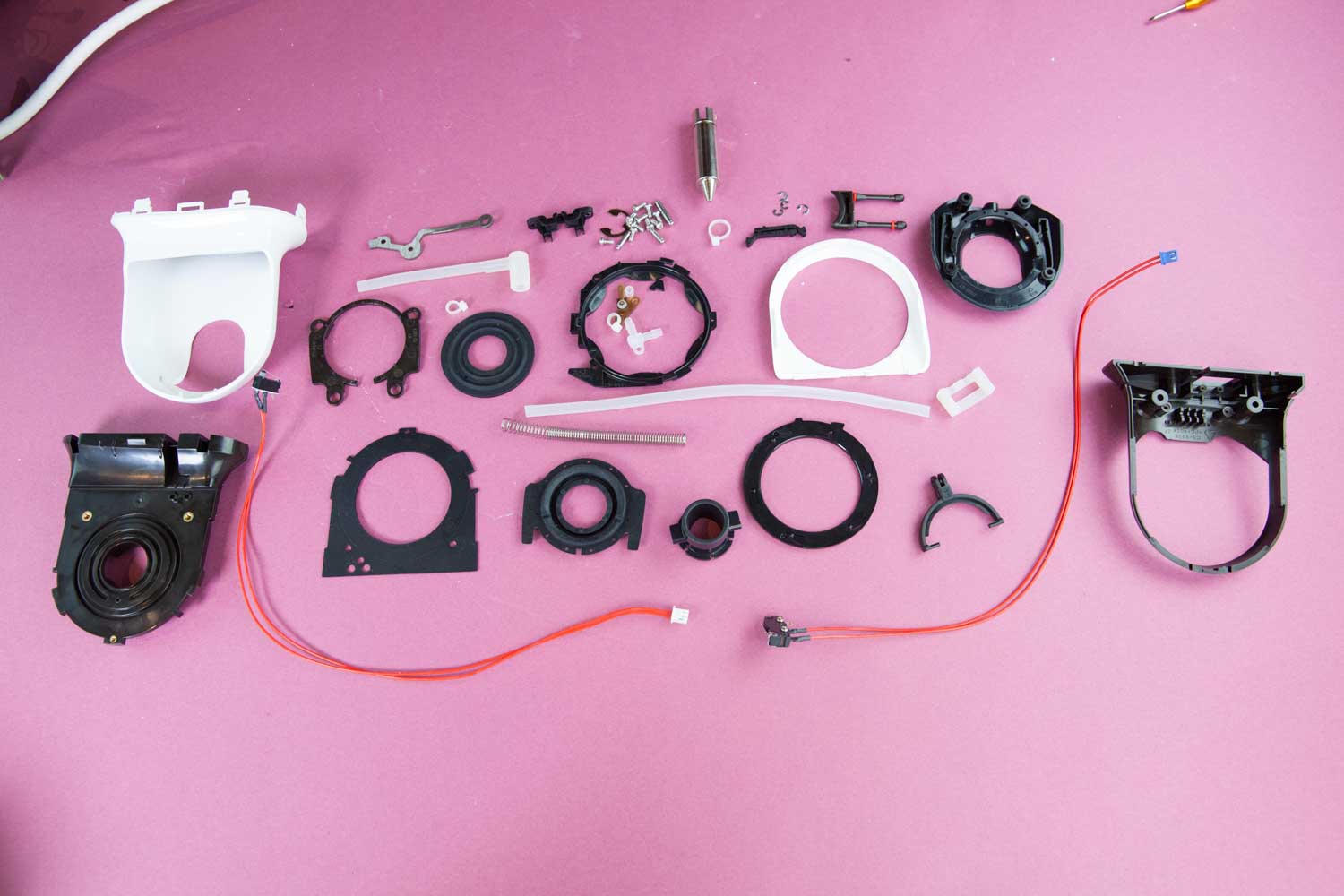
Custom injection molded components in three or more different materials, some with inserts
Main Takeaways
Based on our manufacturing knowledge, we can make the following statements about the Teforia:
It’s difficult to imagine this product being anything near cost effective to produce. The materials they used are crazy, and we can guess it took high labor costs to assemble.
The R&D alone had to be insane. This is a great product that was developed by a team of designers and engineers, but someone with manufacturing at their core may have been missing from the table.
We think this is probably a product that’s beloved by a lot of people, but when you think about the fact you can buy something on Amazon for ~$10, its easy to feel that this product is a little much.
